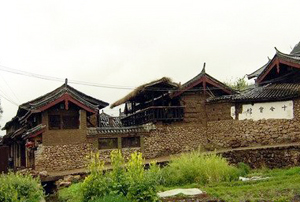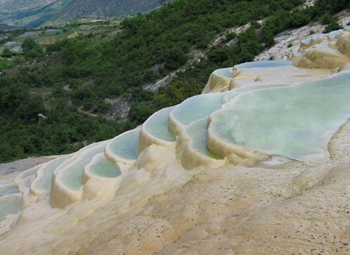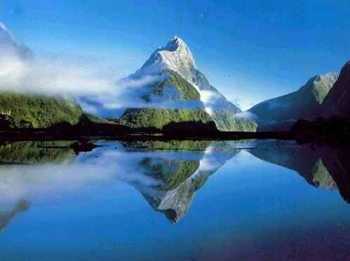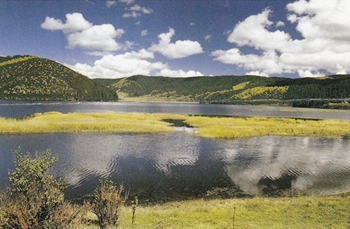Highlights
Itinerary
Arrival in Lijiang, meet your driver and transfer to Lijiang Ancient Town (about 1 hour).
Stroll in the Lijiang Ancient Town, which was built in the late Song Dynasty and early Yuan Dynasty (late 13th century AD) with a history of 800 years. It perfectly combines mountains, water, and the living environment to create an excellent example of human habitat showing the harmony between man and nature. The unique urban layout, tortuous streets, scattered residential houses, and flowing streams make it stand out in many famous ancient towns.
Explore the Black Dragon Pool Park. Located at the foot of North Elephant Hill, the Black Dragon Pool is the landmark of Lijiang and during the sunny day, people can see the reflection of the Jade Dragon Snow Mountain.
Then, drive you to your hotel in Shuhe Old Town (about 30 mins).
Meals included:
Your driver will pick you up at the hotel, and take you to the Jade Dragon Snow Mountain (1hr) and you will take the cable car to Yunshanping, where you could challenge the altitude over 4000 meters.
Visit the Valley of the Blue Moon. It is nicknamed the Little Jiuzhaigou, and this valley has very clear waters flowing down from the mountain. Lots of bride and groom come there to take wedding photos.
After noon, you can visit the village Yuhu at the foot of Jade Dragon snow mountain. And the village Baisha of Naxi minority.
In the evening, free visit in the Shuhe Ancient Town.
Meals included: Breakfast
After breakfast, meet with your driver and depart to Tiger Leaping Gorge(about 1.5 hours). Visit the Tiger Leaping Gorge. This gorge is one of the deepest canyons in the world. Standing here, you could see the Yangtze River roars between Yulong Mountain (5596m) and Haba Mountain (5396m) and be shocked by the impressive landscapes.
Hutiao Rock View: If you would like to journey deeper into the gorge for the view from Hutiao Rock, there is a path that leads closer to the Yangtze River. From here, you can enjoy a breathtaking panoramic view. The hike down takes approximately 20 minutes, and the hike up takes about 30 minutes.
Then, drive to Shangrila (about 3hrs).
After you arrive in Shangri-la, you can stroll through Shangri-La Old Town and visit Guishan Temple, home to a massive prayer wheel.
Meals included: Breakfast
Discover the Ganden Sumtseling Monastery, the largest Tibetan monastery in Yunnan, nicknamed Little Potala by its resemblance to the palace of the Dalai Lama in Lhassa. On the way to the monastery, you stop at a viewpoint for the panoramic photo of the valley.
Walk around the Napa Lake.
Meals included: Breakfast
Your driver will pick you up at your hotel.
Depart to Shibaoshan (176km, 3hrs). Explore the Shibaoshan Caves and Baoxiang Temple, a striking collection of Zen temples and Buddhist sculptures carved into the rocks. After the visit, you can hike from Shibaoshan Caves to Shadengqing Valley (1h30 / 2hrs).
Alternatively, you can take the shuttle bus to return to the parking lot to meet your driver. The hiking path from Shibaoshan Cave to Shaxi Village (30 mins) is beautiful and relatively easy, but it is not recommended for those with knee problems as the path consists of steep stairs.
Continue your trip to Shaxi (30km, 50 min).
Stroll in the Shaxi village at leisure, admiring its 14th-century Ming Dynasty buildings. You’ll see vignettes of daily life.
Meals included: Breakfast
Your driver will pick up at your hotel and take you to Dali (about 2.5 hours).
On the way, visit Haishe Park, located at Erhai Lake. Enjoy the scenery of Erhai Lake.
Explore the beautiful Three Pagodas of Chongsheng Monastery, which are the most iconic symbols of Dali.
Wander in the Dali Ancient Town and discover the Bai Catholic Church.
Meals included: Breakfast
Transfer to Dali Airport, return by flight.
Meals included: Breakfast
Pricing & Accommodation
-
 US Dollar
US Dollar -
 Euro
Euro -
 GB Pound
GB Pound -
 CA Dollar
CA Dollar -
 AU Dollar
AU Dollar -
 HK Dollars
HK Dollars -
 Renminbi
Renminbi
Inclusions / Exclusions
Inclusions:
Exclusions:
























 The Iron Pillar is actually a pillar made of iron in the Tiezhu Temple in Midu County. With a tallness of 3.3 meters, a circumference of 1 meter and weight of 2 tons, the iron pillar, has witnessed 1100 years of changes, is the oldest and famous historic relic in Midu County. The Iron Pillar is said to be cast by using the confiscated weapons at the order of Zhuge Liang, the most brilliant military consular in Three Kingdoms period (220-280).
The Iron Pillar is actually a pillar made of iron in the Tiezhu Temple in Midu County. With a tallness of 3.3 meters, a circumference of 1 meter and weight of 2 tons, the iron pillar, has witnessed 1100 years of changes, is the oldest and famous historic relic in Midu County. The Iron Pillar is said to be cast by using the confiscated weapons at the order of Zhuge Liang, the most brilliant military consular in Three Kingdoms period (220-280).















 The Baisha Mural is a group of murals scattered around Lijiang City, which took 300 years to complete, therefore it is a reflection of the true life in the late Ming Dynasty and early Qing Dynasty. Having been undergone over 500 years of history, part of the Baisha mural group somewhat becomes indistinct, but a large part of which still can tell you about the culture of Buddhism, Confucianism and Taoism.
The Baisha Mural is a group of murals scattered around Lijiang City, which took 300 years to complete, therefore it is a reflection of the true life in the late Ming Dynasty and early Qing Dynasty. Having been undergone over 500 years of history, part of the Baisha mural group somewhat becomes indistinct, but a large part of which still can tell you about the culture of Buddhism, Confucianism and Taoism.

















































